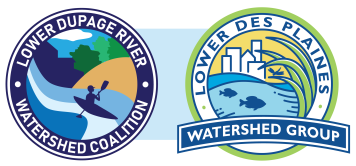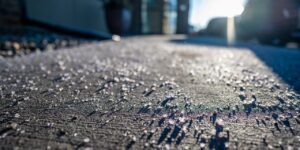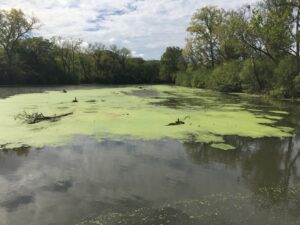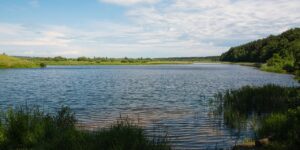How Stormwater Runoff Pollutes Our Rivers
A raindrop that falls from the sky needs to go somewhere. When a raindrop cannot soak into the soil, it instead travels across the ground and becomes stormwater runoff.
As it flows across the landscape, the raindrop picks up whatever it comes in contact with, such as pet waste, fertilizer, pesticides, road salt, oil from cars, trash and soil particles. The runoff is eventually channeled into storm drains that connect directly to rivers and streams. Since stormwater is not treated like wastewater, all the pollutants a raindrop picks up along the way are brought into the river.

Polluted stormwater contaminates our local rivers and streams. The nutrients in fertilizers, pet waste and soil feed algae. Algal blooms can further pollute the water, limit recreational opportunities and kill off aquatic life by depleting oxygen in the water.
How can I help limit polluted water from entering our rivers?
When rain falls to the ground it either soaks into the soil and becomes groundwater, or it flows over the ground and becomes runoff. We want to treat rainwater as a resource and keep it where it falls. As rainwater absorbs into the ground, the pollutants are filtered out, and the water entering groundwater is clean.
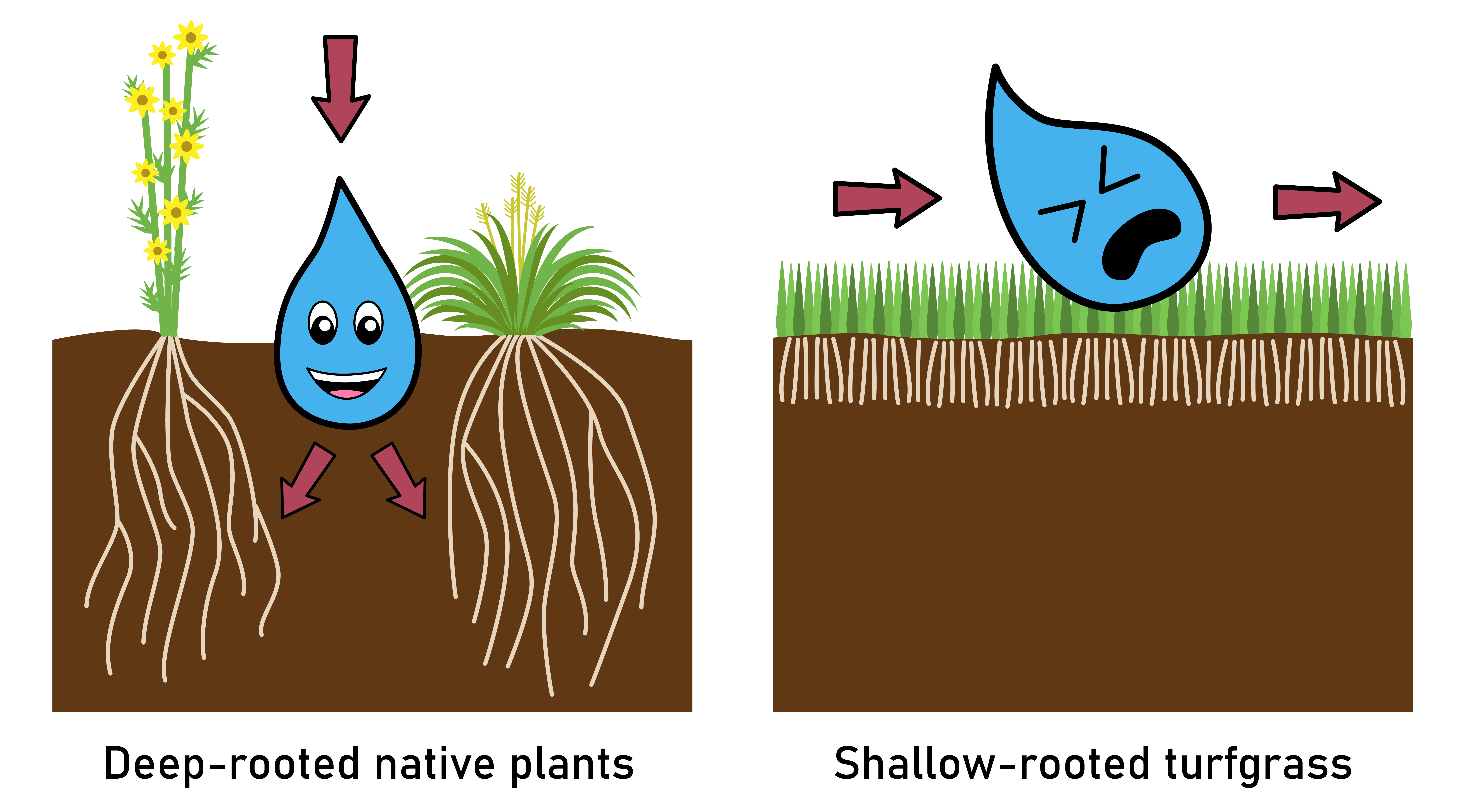

Plants, especially plants native to our area, can be key resources for limiting water pollution. Deep-rooted native plants retain much more water than turf grass. To help a raindrop that falls on your lawn or roof absorb into the ground, consider adding a rain garden to your yard.
A rain garden is planted with rain-loving plants in a depression in your yard. The stormwater that falls on your property will collect there and slowly absorb into the garden instead of running off. Be sure to direct your downspout to the rain garden! Rain gardens keep pollutants out of local waterways and help recharge our groundwater supply.
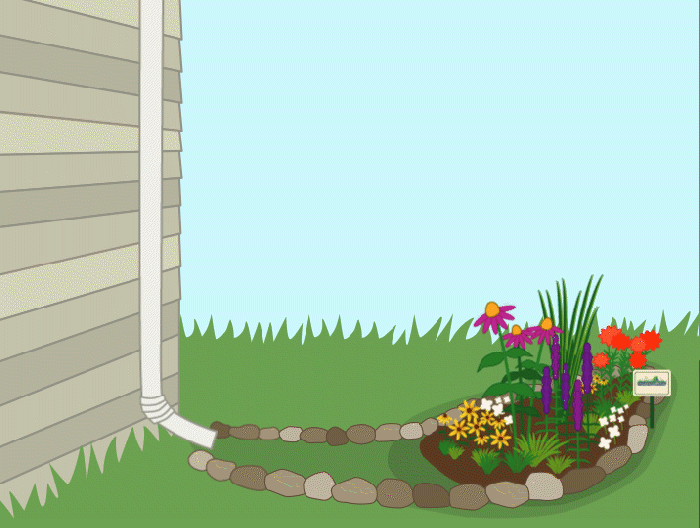

Another way to use rainwater as a resource is to purchase a rain barrel and hook it up to your downspout to collect water to be used for later. Use the conserved water to water gardens or house plants, for pet care, and to wash cars. In addition to keeping our rivers clean, collecting rainwater on your property can lessen the stress on storm water systems, reduce flooding in your neighborhood, and reduce your water bill.


Where can I get native plants and rain barrels?
There are several native plant sales in the spring. Find one near you!
Native plants are also available from these growers:
| Natural Communities Native Plants 812 N Washington Ave Batavia, IL 60510 (331)-248-1016 https://naturalcommunities.net/ |
| Possibility Place Nursery 7548 W. Monee-Manhattan Road Monee, Illinois 60449 (708)-534-3988 https://www.possibilityplace.com/ |
| The Growing Place 2000 Montgomery Road Aurora, IL 60504 (630)-820-8088 AND 25w471 Plank Road Naperville, IL 60563 (630)-355-4000 www.thegrowingplace.com |
Wondering what native plants are best for your yard? Read more about them on our blog or The Conservation Foundation’s website.
For rain barrel sales, we partner with The Conservation Foundation. You can order barrels online or call 630-428-4500, Ext. 115. The following communities also have partnered with The Conservation Foundation to sell rain barrels. Check out their website if you live in these communities.
Other Solutions to Stormwater Runoff
As a property owner, it’s best to start at home, with a rain barrel or rain garden, to help keep our rivers clean. However, you may have the opportunity to support projects in your community that can lessen the negative impact of polluted runoff on local waterways, such as:
Protecting open space. As we keep developing land—covering it with buildings and concrete—we increase the area a raindrop will travel across as runoff and pick up pollutants. Conserving open space allows more rain to soak into the ground where it falls.
Green infrastructure, such as permeable pavement, green roofs and bioswales. Green infrastructure, especially as a part of redevelopment, can be important for cities and suburbs with less open space.
